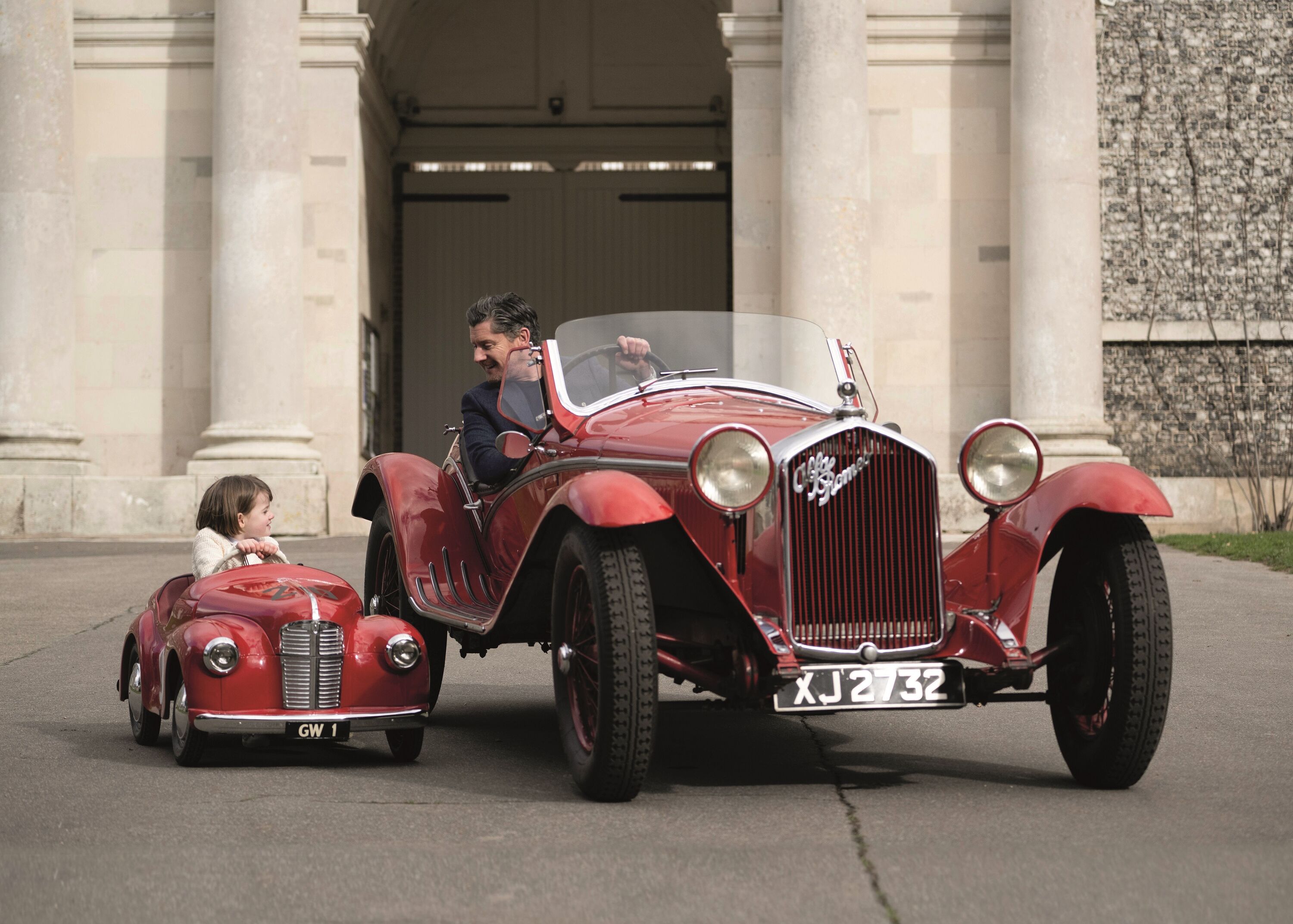The Grand Prix car that won Le Mans | Thank Frankel it's Friday
 Andrew Frankel
Andrew Frankel
Bearing in mind the impending centenary race, I thought between now and then I might devote a few of these columns to some of the lesser-known stories of Le Mans, particularly where there appears no particular reason for them to have faded into obscurity.

The 1950 race is just such an example. It is a notable race for a British audience for many reasons: Sydney Allard placed third in his Allard J2, the best performance by a British car since Lagonda’s win in 1935. Behind him came a Nash-Healey in fourth, and a brace of Aston DB2s in fifth and sixth places, wrapping up the 3-litre category, the 2-litre class falling to the Frazer-Nash in ninth place.
It was also notable for being the race in which Jaguar made its debut, with three sleek new XK120s taking the start, one rising as high as second overall during the night, only to retire right at the death, the other two placing 12th and 15th. In eighth however came perhaps the most renowned car and driver combination in the race, Eddie Hall bringing his 16-year-old Bentley home in what I believe still to be the only successful solo drive in the history of the race, before or since.
It all amounted to six British cars finishing the top ten, an outstanding result however you view it. So why is the race not better known today? In the UK at least, I guess it’s because we didn’t win it.
But what of that winner? I imagine even most people who’d consider themselves avid fans of Le Mans could not tell you what make of car won Le Mans, nor the identity of its drivers. None is exactly a household name these days. But for two completely distinct reasons, they should be remembered.

The car was a Talbot-Lago T26C-GS and while its presence at the race was unquestionably legitimate under the rules, there were mutterings that Le Mans was not conceived for that kind of car at all. For while it was completely compliant with the regulations, the truth was that far from being a sports or touring car in its own right, it was a Grand Prix machine specifically adapted to squeeze within the rules, meaning it had two-seat bodywork, headlights, mudguards, an on-board starter and rearview mirror. Massive power came from the same 4.5-litre straight-six motor used in Grand Prix racing, complete with its Wilson four-speed pre-selector gearbox.
Serious opposition came from no fewer than five Ferraris, one of them crewed by previous double winner Raymond Sommer who went scorching out of the blocks, signalling his intent by recording the first-ever race lap at over 100mph. Sadly, not least because Sommer was killed later that season when he overturned his Cooper, it was not to be. Unlike the previous year when two Ferraris had entered and one had won outright, this time all five failed to see the finish.
The Talbot belonged to and was raced by Louis Rosier, a wealthy Frenchman who raced in Formula 1 from its inception in 1950 to his death in a Ferrari 750 Monza at Montlhéry in 1956. He found the podium twice in that first season, no mean feat in a private Talbot against the might of the all-conquering works Alfa Romeos, but they would be the best finishes of his 38 Formula 1 World Championship starts.

He was aged 44 when he lined up for the Le Mans start. It was his third entry in the race, the first having come 12 years earlier in 1938. This year, like the last when his Talbot retired, he was paired with none other than his son, the then 24-year old Jean-Louis Rosier.
But anyone thinking how lovely it must have been for father and son to divvy up the challenge of Le Mans between them does not understand the dynamic between the two. Rosier senior would start the race and he’d finish it too. Indeed the young whippersnapper appears to have been there as no more than an emergency backup.
Dad did the first 13 hours, including the entire night stint, solo, and broke Sommer’s freshly minted lap record in the process by which stage the race seemed in the bag, the only opposition coming from Pierre Meyrat and Guy Mairesse’s similar car. But at 5 am, with a black eye courtesy of an owl hitting his windscreen in the small hours, the car was misfiring. He brought it in, diagnosed a broken rocker arm, fixed it himself in 38 minutes and then – only then – did he allow young Jean-Louis a brief go. Very brief as it turns out. Two laps later he was hauled back in, his old man hopped aboard once more, overtook his rivals and stayed in the car to the finish. In total, he’d driven 23hrs and 10 mins.
It might be the longest period of time one driver has completed while winning Le Mans. Other candidates include Sommer in 1932 and Luigi Chinetti in 1949. Even if it’s not, it remains the only time that victory at Le Mans has been an entirely family affair, and for that alone it should be better remembered than it is.
Images courtesy of Motorsport Images
Talbot-Lago
T26C GS
Rosier
Jean-Louis Rosier
Louis Rosier
Thank Frankel it's Friday
Le Mans
Le Mans 1950





